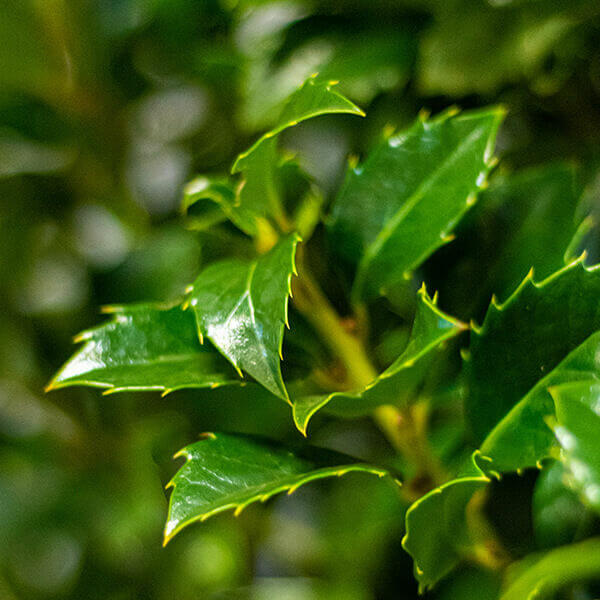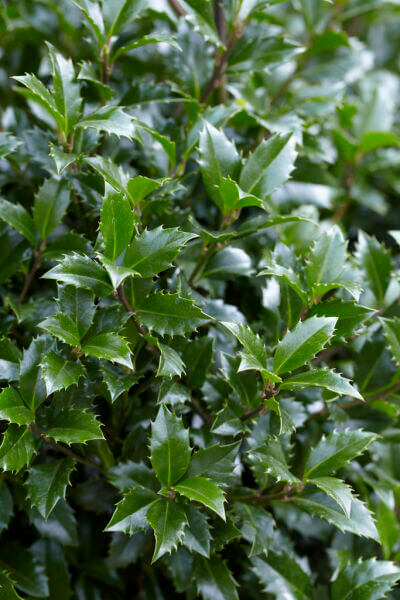Best Hedging Plants For Flowering Hedges
Improve your garden's attraction with lush hedge varieties such as Yew (Taxus), Thuja, Laurel, Photinia, and Bamboo, celebrated for their structural integrity and ecological benefits.
Yew and Thuja provide evergreen protection and winter strength, while Laurel provides rapid development and broad, fragrant leaves.
Photinia includes seasonal charm with its lively red foliage, and Bamboo provides a low-maintenance, peaceful atmosphere.
These hedges improve air quality, minimize noise, and develop tranquil, private spaces.
Correct planting, spacing, and upkeep make sure vigorous growth and eco-friendly harmony.
Check out how these lavish varieties can raise your garden's appeal and well-being.
Key Takeaways
Change Your Garden With Lush Hedge Ranges
- Select Yew for its dense, evergreen development and unequaled longevity.
- Select Laurel for its fast development and broad leaves, ensuring quick privacy.
- Pick Photinia for its lively seasonal foliage, which turns a striking dark red.
- Utilize Bamboo for a low-maintenance, winter-hardy hedge with aesthetic appeal.
- Space plants 2-3 per meter and prune routinely for ideal development and health.
Popular Hedge Plants
When changing a garden with rich hedge ranges, it's necessary to consider popular hedge plants such as Yew, Thuja, Laurel, and Photinia due to their unique characteristics and benefits.
Yew (Taxus) is highly respected for its durability and thick, green development, making it a prime option for sustaining landscapes.
Thuja is kept in mind for its evergreen foliage and robust winter resilience.
Photinia includes seasonal vibrancy with red leaves that darken over time, developing vibrant visual appeal.
Laurel uses quick development and aromatic, broad leaves, ideal for fast personal privacy.
In Addition, Bamboo is an outstanding choice for ambiance, offering a low-maintenance, winter-hardy alternative that improves the garden's visual with its stylish, swaying canes.
These selections cater to a variety of horticultural requirements and choices.
Benefits of Garden Hedges
Garden hedges offer a wide variety of advantages, making them an important addition to any landscape. These natural barriers are affordable to carry out and supply significant wind security, enhancing air circulation and adding to sound decrease. The thick foliage of hedges like Thuja and Beech ensures privacy by obstructing visibility, creating a secluded and peaceful environment.
Hedges also play an essential role in microclimate guideline, offering a stable environment that cultivates plant growth and minimizes temperature fluctuations. Their detailed leaf structures filter contaminants, enhancing air quality and contributing to a much healthier garden community.
Additionally, hedges master sound reduction, taking in and deflecting sound waves to lower ambient sound levels. This dual performance of providing both acoustic and visual privacy improves the general harmony and aesthetic appeal of any garden.
Planting and Upkeep Tips
For a successful hedge, precise preparation of the planting location is essential. Make sure the soil has proper pH and drainage to support strong root advancement.
Area the plants appropriately for the selected types. Water the hedge regularly during its initial development stage, adjusting as needed with seasonal modifications.
Carry out a systematic insect control and illness avoidance technique, utilizing chemical or organic treatments when required. Frequently check for aphids, mites, and fungal infections.
Apply mulch to keep wetness and reduce weeds. Seasonal pruning promotes thick growth and air circulation, important for plant health.
Following these guidelines will assist you cultivate a dynamic, properly maintained hedge that enhances the beauty of your garden.
Spacing and Trimming Guidelines
Spacing and Trimming Guidelines
Proper spacing and trimming are essential for cultivating healthy, visually appealing hedges. Sufficient spacing guarantees each plant receives sufficient nutrients, light, and airflow.
Follow these guidelines for optimal hedge maintenance:
- Spacing: Position hedge plants 2-3 plants per meter to encourage robust development.
- Pruning Strategies: Routine pruning is necessary for keeping wanted hedge height and shape. Cut brand-new growth in summertime and cut back older wood during winter season.
- Seasonal Care: Change cutting approaches and schedules according to seasonal requirements to make sure plant health.
- Hedge Height: Routinely display and cut to maintain the desired hedge height and achieve uniform aesthetic appeals.
Following these steps will ensure your hedge flourishes, improving both the appeal and performance of your garden.
Selecting the Right Hedge
Choosing the Right Hedge
Picking the suitable hedge involves evaluating aspects such as fully grown height, foliage density, and environmental strength. Successful hedge plant selection needs understanding each types' growth characteristics and site-specific flexibility.
For example, Yew (Taxus) uses outstanding longevity and thick growth, while Thuja is notable for its winter season strength. Furthermore, considering upkeep requirements is essential; fast-growing types like Laurel or Privet need regular cutting, whereas low-maintenance options like Bamboo or Ivy may be preferable for those looking for minimal maintenance.
Environmental aspects such as soil type, light availability, and wetness conditions should also assist the selection procedure. This careful method makes sure the chosen hedges will prosper, providing both aesthetic and practical benefits to the garden landscape.
Shipment and Planting Advice
To ensure your hedge plants prosper, they should be delivered by specialized couriers and planted without delay upon arrival.
Follow these essential steps for effective planting:
- Soil Preparation: Improve the soil with raw material to improve drainage and nutrient material.
- Planting Depth: Develop a trench twice the width and equal to the depth of the root ball.
- Watering Strategies: Water completely after planting, keeping the soil consistently wet but not filled.
- Mulching: Use a layer of mulch to maintain wetness and suppress weeds.
Client Support and Service
Offered the important role of prompt support in horticultural pursuits, our customer assistance team is readily available 6 days a week through telephone, email, and social networks to provide expert suggestions and quickly address any issues. Their commitment to fast reaction times guarantees customer fulfillment by fixing queries connected to plant health, optimal planting techniques, and upkeep schedules.

-------------------
Six days a week
Social Media
This detailed support system, reinforced by an excellent 9.3/ 10 client ranking, highlights our dedication to improving the gardening experience for every customer.
Often Asked Concerns
For How Long Does It Take for Hedge Plants to Develop?
Hedge plants generally need one to three years to click here end up being completely established, with the specific duration differing by types and growing conditions.
Efficient care throughout this vital period is vital for robust growth. Consistent watering, vigilant weed control, and suitable fertilizer application are pivotal in promoting strong root development.
For instance, fast-growing species like Laurel may develop faster, while slower-growing ranges such as Yew may take longer. Diligent maintenance speeds up the facility procedure, leading to healthy and dense hedges.
What Are the very best Hedge Plants for Personal Privacy?
The question of the very best hedge plants for personal privacy includes evaluating evergreen and deciduous options.
Evergreen hedges like Thuja, Laurel, and Cypress offer year-round protection, making sure continuous privacy.
In contrast, deciduous hedges such as Beech provide seasonal personal privacy, shedding leaves in chillier months.
Key maintenance suggestions for personal privacy hedges consist of routine cutting, fertilizing in spring, and proper spacing-- generally 2 to 3 plants per meter.
Furthermore, consistent watering and persistent weed removal are essential for promoting healthy, dense development.
Can Hedge Plants Bring In Wildlife to My Garden?
Yes, hedge plants can draw in wildlife to your garden by offering vital advantages like shelter, food, and nesting websites, consequently improving local biodiversity. Yew, holly, and laurel are excellent for attracting birds, while ivy supports a variety of pests.
Nevertheless, it's essential to note that there are some drawbacks, such as increased maintenance to handle insects and regular maintenance. Thoroughly choosing and maintaining hedge varieties can assist stabilize these downsides and advantages, ultimately cultivating a sustainable and dynamic ecosystem in your garden.
Exist Any Flowering Hedge Plants Available?
Yes, there are flowering hedge plants available that can improve the beauty of your garden.
For instance, Elaeagnus, also called Olive Willow, produces fragrant white flowers in the fall, adding a touch of sophistication.
Photinia, another popular choice, showcases lively red leaves that develop into an abundant green, producing a vibrant visual effect throughout the seasons.
To make sure these plants flourish, it's vital to practice appropriate pruning strategies and seasonal upkeep, such as cutting new development in the summertime and cutting down in the winter.
These steps will assist maintain the health and visual appeal of your blooming hedges.
How Do I Prevent Insects in My Hedge Plants?
To avoid pests in hedge plants, employ natural insect control approaches and maintain appropriate hedge care. Present beneficial bugs like ladybugs, which victimize harmful insects, to produce a well balanced ecosystem.
Regularly examine your hedges for indications of problem and promptly eliminate any afflicted parts to avoid the spread. Make sure the health of your hedges by using balanced fertilizers and providing adequate water.
Use mulching to keep soil wetness and correct spacing to lower plant tension and promote robust development. These practices jointly assist in decreasing bug concerns and keeping a healthy hedge.
Conclusion
In essence, picking the ideal hedge ranges such as Yew, Thuja, and Laurel can change any garden into a serene sanctuary. These plants offer year-round greenery, improve aesthetic appeal, and offer useful advantages like noise decrease and wind defense.
Correct planting methods, accurate spacing, constant watering, and seasonal cutting are crucial for ideal growth.
Reliable delivery services and professional customer assistance make sure a smooth experience from purchase to planting, making it simpler than ever to raise your outside space.
Garden hedges offer a plethora of advantages, making them a valuable addition to any landscape. These natural barriers are cost-effective to carry out and offer significant wind defense, improving air circulation and contributing to sound reduction. The thick foliage of hedges like Thuja and Beech makes sure personal privacy by blocking visibility, producing a peaceful and remote environment.

Pruning Methods: Regular pruning is important for preserving desired hedge height and shape. Trim new development in summer season and cut back older wood throughout winter.
Comments on “Hedge Plants For Recreational Areas”